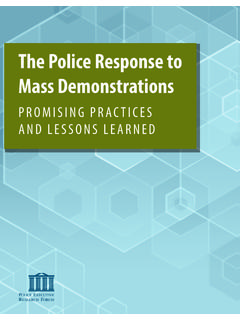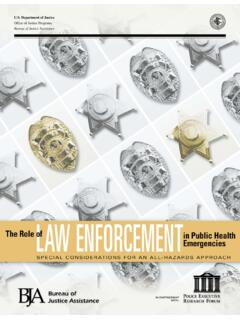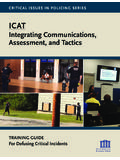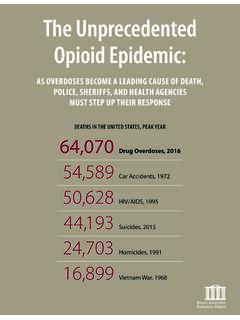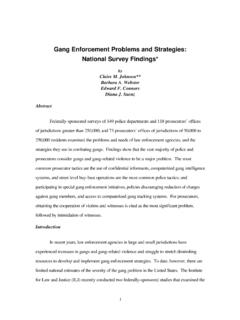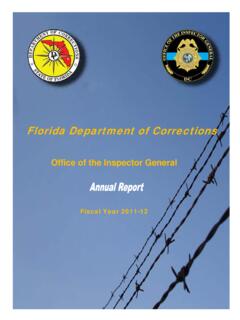Transcription of An Integrated Approach to De-Escalation and Minimizing Use ...
1 CRITICAL ISSUES IN POLICING SERIESAn Integrated Approach to De-Escalation andMinimizing Use of ForcePage intentionally blankCRITICAL ISSUES IN POLICING SERIESAn Integrated Approach to De-Escalation andMinimizing Use of ForceAugust 2012 This publication was supported by the Motorola Solutions Foundation. The points of view expressed herein are the authors and do not necessarily represent the opinions of the Motorola Solutions Foundation or individual Police Executive Research Forum Executive Research Forum, Washington, 20036 Copyright 2012 by Police Executive Research ForumAll rights reservedPrinted in the United States of AmericaISBN: 978-1-934485-20-0 Photos by Tam Vieth and James and interior design by Dave ..iIntroduction.
2 IiiThe Nature of the Challenges ..1 Solutions and Promising Practices ..12 Responding to Justice Department Consent Decrees ..29 Conclusion ..35 About PERF ..39 About the Motorola Solutions Foundation ..40 Appendix: Participants at PERF Summit An Integrated Approach to De-Escalation and Minimizing Use of Force ..41 Acknowledgments iAcknowledgmentsAbout 10 years ago, I had a meeting with San Diego Police Chief Bill Lansdowne. PERF and the San Diego Police Department have enjoyed a long-term working relationship, and I wanted to build on the work we had done together on prob-lem-solving policing. I asked Bill what he consid-ered the defining issues for police chiefs. And he said, If you take on the issue of police use of force, it will resonate with every chief in the country.
3 It is what keeps chiefs up at night. I took Chief Lansdowne s advice to heart, and it is no accident that the report you are holding is the fifth in the Critical Issues in Policing Series to address police use of report addresses a key force-related issue: avoiding the unnecessary use of force against per-sons with mental illness, post-traumatic stress dis-order, alcohol or drug addictions, disorders such as autism, or other issues that can cause them to behave erratically. Across the country, police are being trained to recognize these situations when they happen, and then to de-escalate the encounter whenever possi-ble. The goal is to prevent injuries to everyone the subject, the public, and police we decided to conduct a Critical Issues project on de-escalating encounters with mentally ill persons and others who present special challenges to the police, I knew that many police chiefs would be interested in participating.
4 This is an issue that police executives talk about often. But even so, I was a bit surprised when, shortly after announcing the project, we received so many registration requests that we had to close registration and arrange for a standing-room-only first of all, I d like to thank all of the PERF members and other experts who came to our Sum-mit and shared their expertise about this difficult topic. (A list of participants is included as an appen-dix to this report.)And once again, I want to thank the Motorola Solutions Foundation for supporting the Criti-cal Issues in Policing Series. Without this gener-ous backing, PERF would be unable to take on so many of the most important issues that we have addressed in this series issues like the innovations in technology that are transforming best practices for managing major events such as politi-cal impact of the economic crisis that has been battering police budgets since role of local police in immigration crime and gang violence.
5 In short, I believe that PERF s partnership with the Motorola Solutions Foundation has produced some of the most important research and policy development ever conducted by am grateful to Greg Brown, Chairman and CEO of Motorola Solutions; Mark Moon, Senior Vice President, Sales and Field Operations; Karen Tandy, Senior Vice President of Public Affairs; Jim Welch, Senior Vice President, North American Sales; Rick Neal, Vice President, Government Strat-egy and Business Development; and Matt Blakely, Director of the Motorola Solutions I d like to acknowledge the work of the peo-ple who make everything happen at PERF, starting 1. See Exploring the Challenges of Police Use of Force; Strategies for Resolving Conflict and Minimizing Use of Force; Police Management of Mass Demonstrations; and Managing Major Events: Best Practices from the Acknowledgmentswith my Chief of Staff, Andrea Luna, who managed this project and helped to shape the content and agenda of the Summit.
6 Deputy Chief of Staff Shan-non Branly, Research Associates Megan Collins and Sunny Schnitzer, and Project Assistants James McGinty and Balinda Cockrell conducted back-ground research and phone interviews of present-ers at the Summit, and helped organize the logistics of the meeting. Communications Director Craig Fischer and James McGinty deserve special recog-nition for pulling this report together and making it a coherent and useful document. They do great work and I am grateful for their painstaking efforts. My Special Assistant, Tam Vieth, also contributed to the success of the Summit, in part by taking the excellent photographs in this report. Our Graphic Designer, Dave Williams, produced this report in online and print versions.
7 A special thanks to our lead consultant (and former Senior PERF Associ-ate), Melissa Miller Reuland. Melissa provided advice and guidance to PERF in assimilating the vast information on this topic and in shaping the agenda for the Summit. She was critical to distill-ing the recommendations from the Summit and, as always, she was a pleasure to work with and stepped in at just the right importance of this document is that in the 30 minutes or so that it will take a chief to read it, you can quickly learn of some of the most prom-ising practices in the area of use of force and De-Escalation . I hope you will find it interesting and DirectorPolice Executive Research ForumWashington, Al-Majali, Director General of the Public Security Directorate of Jordan, gave the luncheon address at the PERF Summit on De-Escalation and Minimizing Use of Force.
8 General Majali, who directs a national police force with 57,000 employees, described his department s efforts to adopt a strategy of soft policing in handling demonstrations in Jordan. Unlike other nations that have responded to Arab Spring protests with tanks, Jordan has decided to use reason to absorb such activity, he said. We try to bridge the gap by establishing credibility. We build the gap by showing the public that we are there to serve them. For example, he said, his officers offered water and juice drinks to demonstrators, sending a message that helped result in peaceful iiiIntroductionPersons with mental illnesses, drug or alcohol addictions, or disorders such as autism can present police officers with difficult challenges.
9 In some cases, a person may brandish a weapon or otherwise appear to pose a threat to the public, to the police, or to himself or herself. The threat may be a real one, or the situation may be less danger-ous that it appears, and often it is difficult to assess the level of danger. These situations often are com-plicated when, because of their conditions, persons cannot communicate effectively with police officers. In some cases, they may appear to be threatening or uncooperative, when in fact they are unable to understand an officer s questions or police agencies have recognized the spe-cial challenges they face in dealing with these popu-lations of persons with various conditions, and have undertaken specialized training programs designed to teach officers to understand these situations when they happen, and to make special efforts to de-escalate the situations when that is possible.
10 As one recent news report expressed it, With that mind-set, the officer can use alternative tactics: words instead of guns, questions instead of orders, patience instead of immediate action. The method may not only defuse a tense situation, authorities say, but [also may] result in treatment at a screening center for the suspect rather than weeks in jail. 2 When police fail to understand that they are dealing with a person with a special condition, the result is sometimes a use of force that may be legally and morally justifiable, especially if the per-son appeared to be threatening the safety of others, but which produces a very unfortunate outcome a situation that some observers call lawful, but awful.
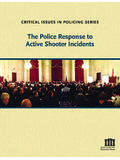
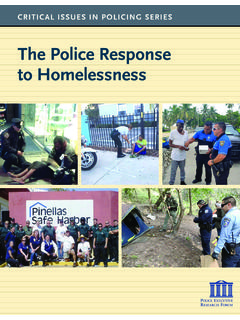

![[Page Intentionally Blank] - Police Executive …](/cache/preview/6/9/5/6/0/0/0/f/thumb-6956000f3f6abdc7d6fe85fa330b8ad5.jpg)
